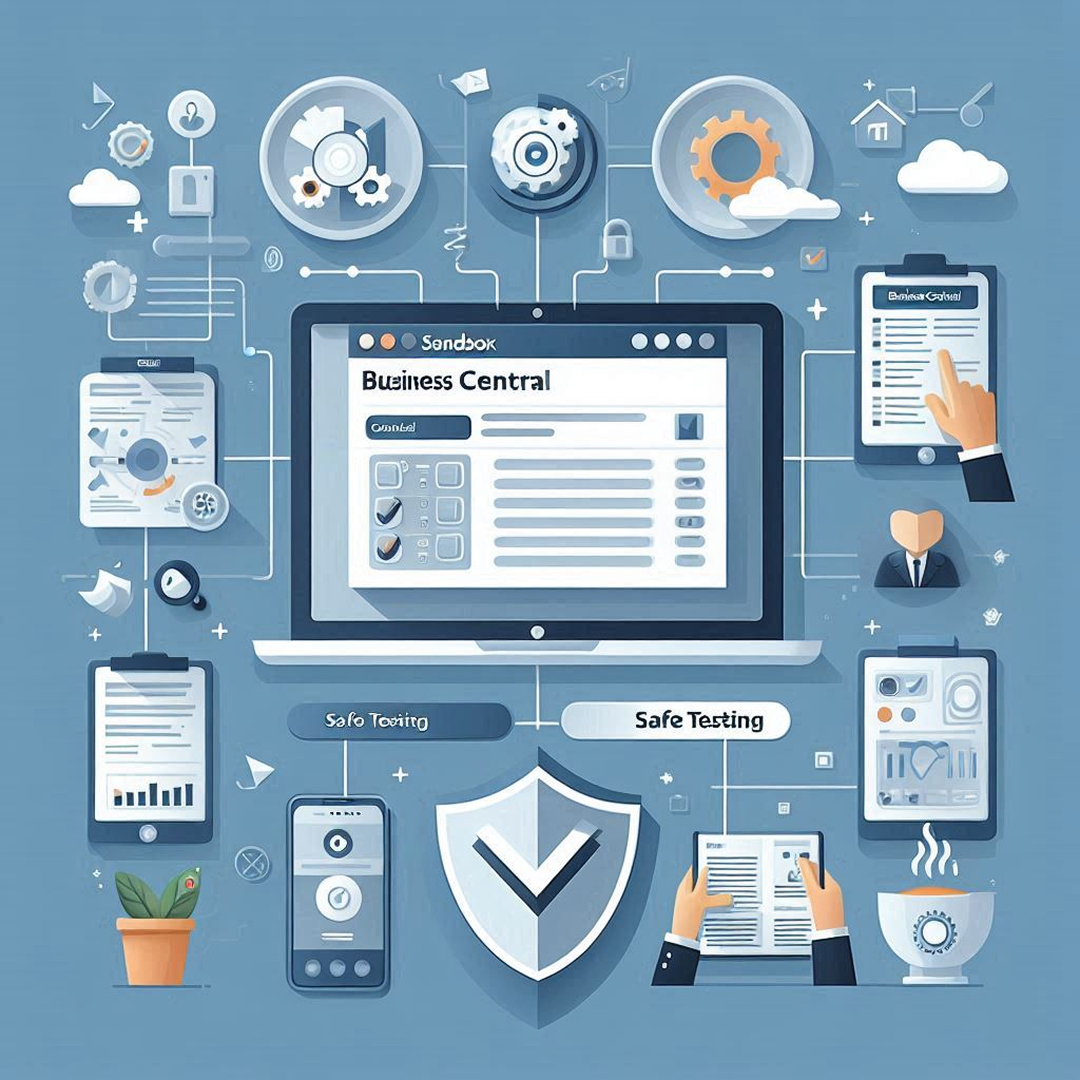Microsoft Dynamics 365 Business Central is a robust business management solution designed for small to medium-sized enterprises, especially in the UAE. A critical component of this system is the sandbox environment, which supports SecOps (Security Operations) to ensure secure cloud-based managed services. Sandboxes provide an isolated testing environment where organizations can experiment with new features, test customizations, and train employees without impacting the live production system. By integrating SecOps, businesses can enhance security, ensure compliance, and prevent vulnerabilities during development and testing processes.
Key Features of Cloud-Based Managed Services with SecOps in Business Central Sandboxes
1. Isolation from Production
Business Central sandboxes operate separately from the production environment. This isolation ensures that testing and development activities do not interfere with live operations, improving security through SecOps best practices.
2. Customization and Testing
Users can customize the Business Central application within the sandbox. This includes adding new features, modifying existing functionalities, and testing integrations with other systems.
3. Data Management
Sandboxes can be filled with sample data, allowing users to simulate real-world scenarios. This feature is especially useful for training and testing how new features will interact with existing data.
4. Multiple Sandboxes
Organizations can create several sandboxes for various purposes, such as development, testing, and training. This flexibility allows teams to work on different projects simultaneously without interference.
5. Easy Reset and Refresh
Admins can reset or refresh sandboxes when needed while maintaining security integrity. Automated SecOps audits can ensure that no vulnerabilities persist after each reset.
Usage Scenarios for Cloud-Based Managed Services in Business Central Sandboxes
1. Secure Development and Customization
Developers can use sandboxes to create and test custom applications or extensions using the AL programming language. This environment allows for safe development of new functionalities without risking the integrity of the production system.
2. Secure Integration Testing
Before integrating Business Central with other applications, SecOps measures help verify that data transmission is encrypted and secure, ensuring compliance with industry standards.
3. User Training
New users can be trained in the sandbox environment without the risk of affecting real business operations. This hands-on training approach helps users become familiar with the system’s functionalities and workflows.
4. Feature Testing with Security Protocols
Organizations can test new Microsoft updates while leveraging SecOps to detect potential security vulnerabilities before deploying changes to production.
5. Performance Testing
Sandboxes can be used to simulate high-load scenarios to test the performance of Business Central under stress. This testing is crucial for ensuring that the system can handle peak usage times without performance degradation.
Benefits of Utilizing SecOps in Business Central Sandboxes
1. Risk Mitigation
By allowing changes to be tested in an isolated environment, sandboxes significantly reduce the risk of errors or issues affecting the production environment. This risk mitigation is vital for maintaining business continuity.
2. Cost Efficiency
Testing and development in a sandbox can save organizations money in the long run. By identifying and resolving issues before they reach production, businesses can avoid costly downtime and disruptions.
3. Enhanced Collaboration
Sandboxes facilitate collaboration among development teams, business analysts, and end-users. Teams can work together to test new features and gather feedback, leading to better outcomes and more user-friendly applications.
4. Faster Deployment
Securing sandbox environments with SecOps enables organizations to validate features more efficiently, accelerating the rollout of secure updates.
5. Improved Quality Assurance
Sandboxes allow for thorough testing of customizations and integrations, leading to higher quality applications. This quality assurance process helps ensure that the final product meets user expectations and business requirements.
6. User Empowerment with Security Awareness
Sandbox users gain hands-on experience with SecOps, fostering a security-conscious culture within the organization.
Best Practices for Implementing SecOps in Business Central Sandboxes
1. Regular Security Maintenance and Updates
Maintain up-to-date security policies and apply patches to sandbox environments, ensuring they align with the latest SecOps standards.
2. Documenting Security Changes and Access Logs
Keep detailed documentation of changes made within the sandbox. This documentation can be invaluable when transitioning successful changes to the production environment.
3. Strict User Access Controls
Implement access controls to ensure that only authorized users can make changes in the sandbox. This control helps prevent unauthorized modifications and maintains the integrity of the testing environment.
4. Continuous Security Monitoring and Threat Detection
Establish a feedback mechanism for users to report issues or suggest improvements while using the sandbox. This feedback can guide further development and enhancements.
5. CI/CD Integration with Secure Pipelines
For organizations using Continuous Integration/Continuous Deployment (CI/CD) practices, integrate sandbox testing into the pipeline. This integration ensures that code changes are automatically tested in the sandbox before being deployed to production.
Conclusion
The integration of SecOps in Business Central sandboxes ensures a secure, controlled, and efficient environment for testing and development. Organizations leveraging cloud-based managed services can significantly reduce security risks while maintaining flexibility and innovation. By implementing SecOps best practices, businesses can optimize security monitoring, prevent vulnerabilities, and enhance operational resilience.
Additionally, as enterprises explore secure testing environments, Exploring Container Sandboxing and Isolation Techniques becomes essential for ensuring better data protection and compliance. Businesses should continue adopting advanced sandboxing strategies to maintain a strong security posture in cloud-based ERP environments.
Do you like to read more educational content? Read our blogs at Cloudastra Technologies or contact us for business enquiry at Cloudastra Contact Us.
